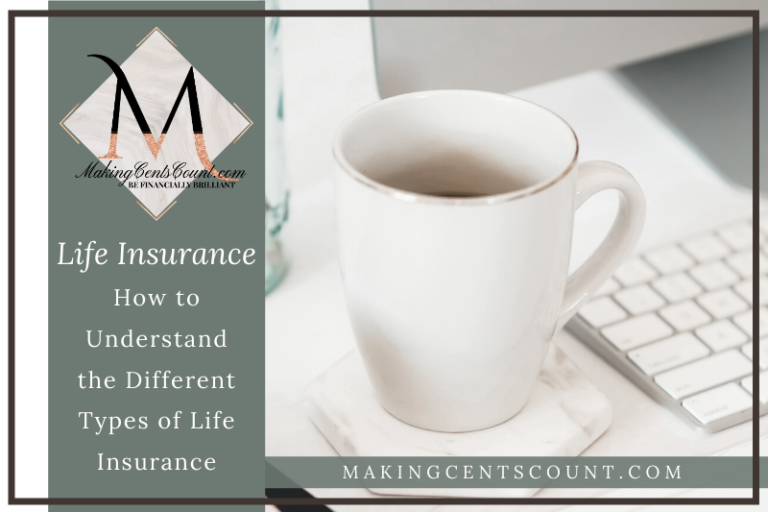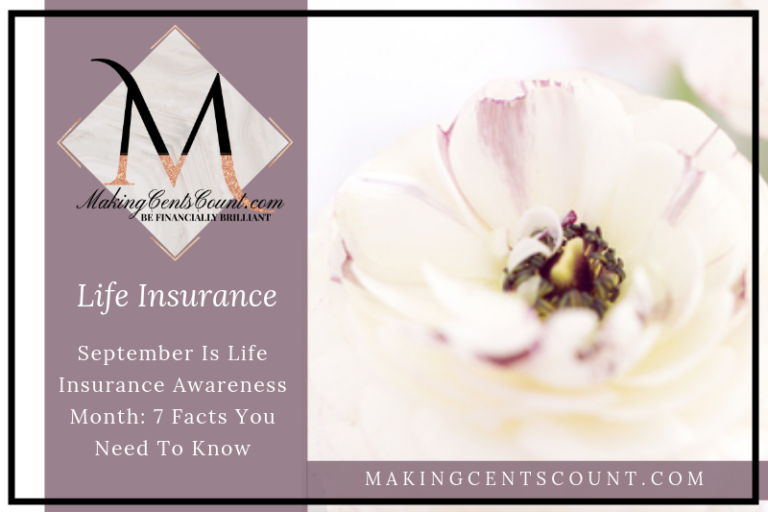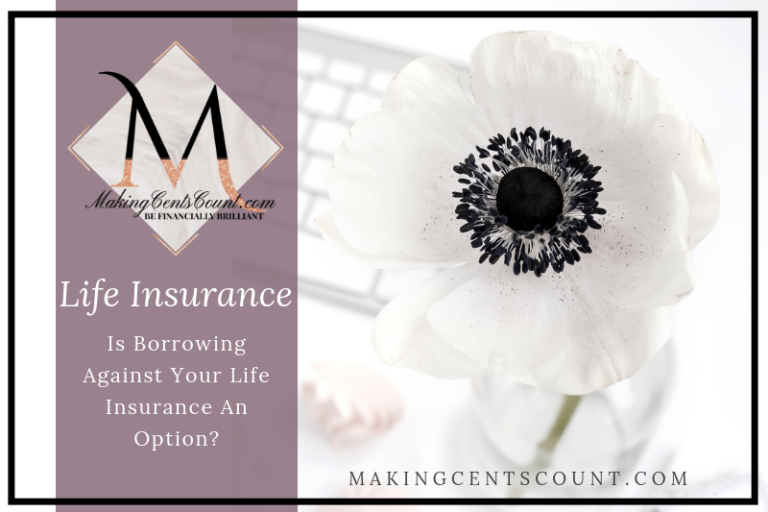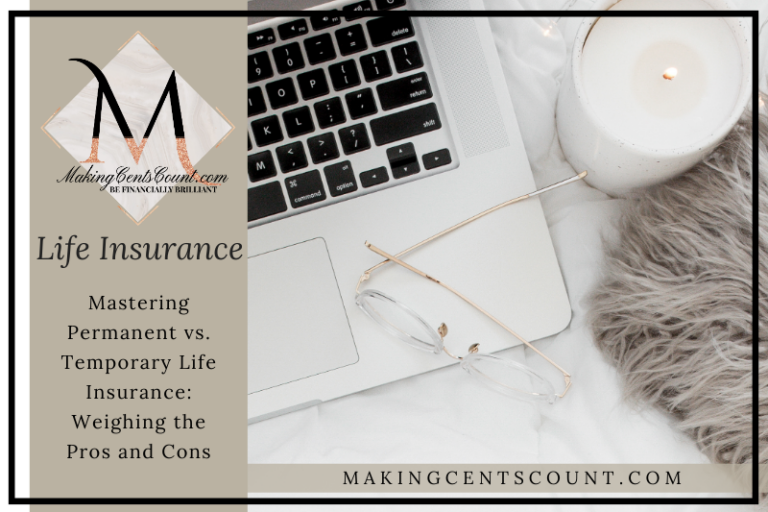Term Life Insurance: Unlocking the Savings Potential and Unraveling the Cost Mystery
Estimated reading time: 19 minutes
When considering the purchase of a life insurance policy, you may encounter terms like “whole life,” “indexed universal life,” “term life,” “ROP,” and more. Clients frequently ask me if life insurance, especially term life insurance, is a sound investment. My response always depends on your specific situation. You see, life insurance isn’t a one-size-fits-all solution. If you have assets or dependents, investing in life insurance is likely a prudent choice. However, if you have no outstanding obligations, it may not be necessary. Selecting the right type of life insurance policy necessitates careful consideration. If you’re considering term life insurance as an investment, there are important factors to consider. Blindly investing in it can be a costly mistake. In fact, a term life insurance policy may be the most expensive one you ever buy. Here’s what you need to know.
Table of Contents
- Cracking the Code: Understanding Term Life Insurance
- Unraveling the Mystery of Term Life Insurance
- Level Up Your Future: Unlock the Benefits of Specified Level Term Life Insurance
- Boosting Benefits: Group Term Life Insurance
- Secure Your Future: Exploring Decreasing Term Insurance for Mortgage Protection
- Rent or Own? Choosing the Right Life Insurance Policy for You
- Decoding “Age Nearest” in Life Insurance
- Get Your Money Back: Return of Premium (ROP) Term Policies Explained
- The Absolute “Must-Have” Feature for Your Term Life Insurance Policy
- Secure Your Future with Life Insurance: The Ultimate Investment, No Matter What Path You Take
- Shielding Assets: Empowering Women to Safeguard Their Wealth
- Decoding Life Insurance: Unraveling the Secrets of Your Policy
- Secure Your Loved Ones’ Future: Life Insurance – Not Just for You, But for Those You Leave Behind
- Protect Your Future with Burhoe Insurance Solutions
- Making Cents Count Financial Organizer
Are you ready to start investing, control your finances, and prepare for retirement? Join our amazing community! You’ll receive exclusive financial tips from Making Cents Count, as well as unlimited FREE access to our resource library full of money-saving tools and guides.
Cracking the Code: Understanding Term Life Insurance
Curious to know how Google defines term life insurance, I decided to look it up. I wondered, “How much variation can there really be?” As it turns out, there are numerous ways to define term life insurance. While each definition may have its own unique perspective, one consistent theme emerged from my search results. A term policy can be the most costly life insurance option you’ll ever purchase. Moreover, my search brought up an abundance of links tempting me to “apply” for term insurance. With numerous insurance carriers and sellers competing for attention, it’s no surprise that people feel discouraged by the task of finding a clear definition without sales pitches.
Unraveling the Mystery of Term Life Insurance
Fed up with the onslaught of life insurance advertisements, I turned to my trusted companion, the Oxford English Dictionary. Term life insurance, as it goes, provides a payout if the insured passes away within a specified term. No doubt, the average investor seeking life insurance guidance has encountered an abundance of ads and sales pitches. Financial websites are quick to offer explanations, but it’s worth noting their eagerness to steer you towards the term life insurance products they conveniently happen to sell.
Protect yourself from falling for sales pitches. Instead, collaborate with a trusted advisor who comprehends your unique needs before making any decisions about investing in a term life insurance policy. Prioritize conducting thorough research and acquiring knowledge to make informed choices with your hard-earned money. As a helpful resource, I have prepared a comprehensive reference guide in our resource library to assist you in determining if term life insurance aligns with your investment goals. This guide covers key features of various term life insurance policies and sheds light on the surprising costs associated with purchasing this type of coverage.
Short-Term Security: Yearly Renewable Term Policy [YRT]
A frequently encountered form of term life insurance is the Yearly Renewable Term (YRT) policy. It’s also called an Annual Renewable Term (ART) or Increasing Term policy. These policies provide the same coverage, but with different names.
The key to comprehending these life insurance policies lies within their name. This particular policy is renewable on an annual basis, without the need to provide evidence of insurability during the renewal process. Naturally, this presents a significant advantage, making the policy renewal process considerably smoother.
Keep in mind that the YRT premiums will rise annually, which can make them unaffordable in no time. Moreover, your premium will keep increasing every year, depending on your age and policy amount. As a result, many people view this type of insurance as a less favorable long-term investment.
Flex Your Options: From Specified Level Term to Annual Renewable Term [ART]
After completing the initial term length, the ART policy takes effect along with other term policies. For instance, many insurance carriers now offer term lengths of 10, 20, and 30 years, with some even providing options for 35-year and 40-year terms. These terms transition into ART policies in the 11th, 21st, 31st, 36th, and 41st years, respectively. If you choose to keep a 20-year term policy beyond its initial duration, it will automatically convert to an ART policy in the 21st year.
For instance, after 20 years of paying the locked-in premium, it has now reached its expiration date. Get ready, because you’re about to experience a major jump in your new annual premium that’ll make you do a double take! And that’s not all – this “new” premium will keep going up every year, based on your current age.
Choosing the Right Insurance: Why YRT, ART + Increasing Term Might Not Suit Your Long-Term Needs
If you’re looking for a long-term policy to secure your financial future, it’s advisable to avoid certain types of policies like ART (Annual Renewable Term), YRT (Yearly Renewable Term), or Increasing Term policies. While these policies may seem appealing with their initial low premiums, it’s important to keep in mind that they won’t remain affordable as time goes on. As your coverage needs change and you age, the premiums for these policies tend to increase significantly, potentially becoming cost-prohibitive in the long run. So, before making a decision, it’s crucial to carefully evaluate the sustainability and affordability of a policy to ensure adequate protection throughout its duration.
When considering a term policy, it is crucial to ascertain the duration for which the insurer has locked in your annual premium. Avoid any unwelcome surprises of unexpected premium increases by gaining clarity on the timeframe upfront. As my dad used to say, “The big print giveth and the small print taketh away!” Always make it a habit to carefully read the fine print, especially the smaller, take-away details.
Level Up Your Future: Unlock the Benefits of Specified Level Term Life Insurance
Guaranteed Level Term life insurance, also known as a Specified Level Term policy, offers a range of options to suit your needs. Whether you prefer a shorter term like 5 years or a longer one like 40 years, you have the flexibility to choose. Additionally, you can opt for increments of 5 years, such as 15 years, 25 years, or 35 years depending on your age. This ensures that you have the coverage that fits your unique circumstances.
With a Guaranteed Level Term policy, once your policy gets approved, you’ll enjoy a consistent death benefit and a premium that remains unchanged throughout the selected term length. As mentioned earlier, the policy transitions into an Annual Renewable Term (ART) policy after the completion of the term length. Rest assured, your coverage remains reliable and your financial plans secure.
When you opt for a five-year term life insurance policy, your premiums remain fixed and won’t rise during that period. This principle also applies to a 20-year term policy; once approved, your premiums remain locked and won’t increase for two decades. The same concept extends to a 30-year policy and beyond. You get the idea! Rest assured, your premiums will stay constant throughout the chosen term.
Unlocking the Secrets: The Approval Process for Your Term Life Insurance
Curious about how life insurance carriers approve you for a term life insurance policy? During the approval process, insurance carriers take multiple factors into account. These include your age, gender at birth, prescription history (even if you aren’t currently taking the medication – it happens more often than you think!), overall health, family health background, lifestyle, motor vehicle report (MVR), and life expectancy (determined by the insurer and actuaries). When applying for an extensive policy, the assessment of suitability and justification may consider additional factors.
The higher the perceived risk to an insurance carrier, the more likely you are to face higher premiums compared to someone who is seen as less risky. There is also a possibility of being denied coverage altogether if you are considered too much of a risk and the particular insurance carrier is not willing to take on that level of risk. This underscores the importance of seeking guidance from a reliable source who can identify the insurance carrier that best suits your specific needs.
Boosting Benefits: Group Term Life Insurance
It’s worth mentioning that for most people, life insurance begins as part of their employee benefits package. This typically includes a qualified retirement plan, along with medical, dental, and vision coverage. Additionally, it often includes group term life insurance, which can provide coverage ranging from 1 to 2 times your salary, or even more if you opt to purchase it independently.
Group term life insurance policies operate by pooling individuals together to provide coverage against the financial risks associated with death. This type of insurance is commonly offered through employers, professional organizations, or separate group plans, ensuring that members have access to affordable and comprehensive protection for their loved ones. By spreading the risk across a larger group, policyholders can benefit from lower premiums and broader coverage options, making group term life insurance a popular choice for many individuals seeking financial security and peace of mind.
The premiums can either be Yearly Renewable Term (YRT), with an annual increase, or age-banded, where the premiums increase every five years based on your specific “age-band”. For instance, one age-band could be 55-59, followed by a transition at 60-64, and then again at 65-69.
Don’t Rely on Your Group Coverage Indefinitely: Unveiling Lesser-Known Facts
Many individuals fail to consider that employer-provided group coverage is not indefinite. When you decide to depart or retire, two options typically arise. Firstly, you can transition your group policy into a individual permanent one. However, it’s important to note that this shift from a group term policy (temporary life insurance) to an individual whole life policy (permanent life insurance) incurs a substantially higher cost. Secondly, let’s assume you had a $1,000,000 death benefit within your group plan. Once you retire, this amount could dwindle to a mere fraction of its original value depending on your retirement package.
If you intend to remain with your employer until the end, consider the implications of an age-banded employer group policy, if that’s the type of plan your employer provides. As you approach a certain age within the plan, the death benefit could decrease while the premium may increase. Eventually, you may “age-out” of this perk, leading to the termination of coverage altogether.
That’s precisely why it’s crucial to contemplate acquiring a portable personal life insurance policy that you truly own, ensuring coverage no matter where life takes you. Understanding these dynamics during open enrollment is paramount, whether you envision a long-term commitment with your employer or an upcoming retirement.
When to Get Group Term Life Insurance: Making Sense of Your Options
Investing in a group term life policy is a wise choice in two specific situations. First, when you require short-term life insurance coverage. Second, when your employer offers free coverage. Opting for a group term policy ensures you have some form of life insurance in place.
Please be aware that group term life insurance policies may terminate at a specific age, regardless of your consistent premium payments. Coverage limits may vary among different insurance providers. To ensure clarity, it is advisable to thoroughly review the specifics of your policy, contact your administrator, or life insurance carrier for further clarification.
If you find yourself in a situation where securing an individual life insurance policy seems challenging due to your health, there’s no need to worry. It’s important to note that this is a common misconception. There are insurance carriers that offer “Guaranteed Issue” policies, ensuring that you can obtain life insurance regardless of any pre-existing health issues you may have.
Secure Your Future: Exploring Decreasing Term Insurance for Mortgage Protection
A viable alternative for life insurance is the Decreasing Term Policy, commonly referred to as Mortgage Protection Insurance. One intriguing feature of this policy is its correlation with the declining mortgage balance, as the death benefit diminishes each year accordingly. This unique characteristic ensures alignment between the policy and the mortgage, providing a tailored solution.
Throughout the duration of the policy, the death benefit typically decreases each year, while the mortgage steadily diminishes. Surprisingly, the premiums remain constant. This phenomenon arises due to a concept known as the Cost of Insurance (COI). As you age, the COI steadily rises within all life insurance policies. It represents the actual expense of insurance protection, factoring in your age, gender, health, and the amount of the death benefit.
If mortgage protection insurance is associated with the lienholder, the proceeds typically go directly to the lender for payoff in the event of your passing. However, if you have your own personal policy, the proceeds would be directed to the beneficiary you designate. This grants you greater flexibility in determining who receives the payout, rather than it being automatically directed to the lender.
Rent or Own? Choosing the Right Life Insurance Policy for You
To comprehend the distinction between term life insurance and permanent life insurance, consider this: Would you rather rent your life insurance policy or own it? When it comes to investments, owning something typically proves to be more advantageous.
Term insurance can be thought of as pure life insurance. In this type of policy, there is no cash accumulation. Instead, the premiums you pay are used by the insurance carrier to cover the cost of insurance. If, during the term of your contract, you pass away and have diligently paid the premiums without any lapses in your policy, the insurance carrier will provide the death benefit to your designated beneficiaries.
Permanent life insurance offers the advantage of accumulating cash value that can be utilized throughout your lifetime. Despite its higher cost compared to term life insurance, this type of policy provides greater flexibility and ensures a lifelong coverage that you cannot outlive.
When considering life insurance options, which type would you prefer? It ultimately boils down to whether you require coverage for a specific period or seek lifelong protection that remains in force regardless of age.
Decoding “Age Nearest” in Life Insurance
When it comes to life insurance, the approach can be quite interesting. Different insurance carriers may calculate your premium based on either your “current age” or your “age nearest.” Let me break it down for you: “Age nearest” refers to the birthday you are closest to, which can be up to a year older than your actual age for half of the year. While some insurance carriers determine pricing based on your actual age, others consider your nearest age.
As mentioned earlier, the Cost of Insurance (COI) increases as we age, even if the change may seem insignificant at first. This means that your current age offers the most affordable premium for your insurance, whether you’re considering a temporary or permanent policy. So, if you’re thinking about getting a policy, now is the perfect time to take action.
Get Your Money Back: Return of Premium (ROP) Term Policies Explained
If the idea of “throwing money away” on a standard term policy doesn’t sit well with you, there’s an alternative way to invest in term life insurance: a Return of Premium (ROP) policy. ROP policies typically have a minimum term length of 15 years, with options available in 5-year increments up to a 30-year term. This allows you to get back the premiums you’ve paid if you outlive the policy.
An ROP term policy is highly sought after because, at the end of the chosen term, the insurance carrier refunds all the premiums you’ve paid. While it’s not an investment that earns interest, it can be likened to a forced savings account, offering a secure way to save for the future.
Get Clever with ROP: The Power of Using an Underlying Strategy
One option worth considering is when you have a standard 30-year mortgage while opting for a 25-year ROP (Return of Premium) term policy. The underlying strategy is that once you receive all the premiums you’ve paid into the 25-year term, it often amounts to enough to fully repay the remaining 5 years left on the mortgage. This approach allows for both financial security and potential savings.
Please note that a Return of Premium (ROP) term policy typically entails higher premiums compared to a standard term policy. However, the premiums you have paid will be refunded to you at the end of the chosen term length.
An ROP term policy not only offers a benefit to your beneficiaries in the unfortunate event of your passing, but it also comes at zero-net cost to you. Opting for an ROP term policy is a wise choice if you are seeking to invest in term life insurance. Rest assured, with this policy, you can’t go wrong!
Unveiling the Truth Behind ROP: The Compelling Case for Forced Savings
Furthermore, the beauty of a return of premium (ROP) term policy lies in the inverse relationship between term length and annual premium cost. Unlike a standard term policy, the longer the term of your ROP policy, the lower the annual premium becomes. Hence, if you compare a 25-year ROP term with a 30-year ROP term, you will often find that the annual premium for the 30-year option is actually more affordable than that of the 25-year one.
Typically, the ROP term policy sets an upper age limit for applicants, often around 50 years old. Additionally, certain carriers may decline issuing an ROP policy if you have a substandard rating or are approved below the “Standard Non-Tobacco” category, which life insurance carriers refer to as “Table Rated.” This is influenced by your current health status and medical history.
Despite its idiosyncrasies, the ROP term remains an excellent investment in term life insurance. It guarantees the return of the premiums you’ve paid into the policy, ensuring a secure financial future.
The Absolute “Must-Have” Feature for Your Term Life Insurance Policy
The Conversion Option provision is an indispensable addition to any term policy. While not all insurance carriers provide this option, it is worth seeking out. With the conversion option, you have the flexibility to convert your term policy to a permanent individual life policy without the need to provide proof of insurability. This invaluable feature ensures that you can adapt your coverage to your changing needs effortlessly.
The conversion option is particularly valuable in the unfortunate event that your health takes a turn for the worse. Obtaining approval for a new policy with an affordable premium would be slim. So, the inclusion of a conversion feature acts as a safeguard for your life insurance coverage. I’ve encountered a few clients who found themselves in this predicament, unable to secure a new policy due to their deteriorating health. For them, the conversion option proved to be a true blessing.
Term policies can be prohibitively expensive due to the absence of a conversion option. If you fall ill after the policy term ends, you might be compelled to keep that costly term policy, which escalates annually. Alternatively, you could burden your beneficiaries with significant financial obligations.
Unlocking Options: Solutions for the Uninsurable or Terminally Ill
Discover the various possibilities within your life insurance policy. Certain insurers offer the flexibility to convert your entire policy into a permanent one, or opt for a partial conversion using the conversion option. You can even retain the term portion that you haven’t converted. However, it’s advisable to consult your carrier for further details and clarification.
Typically, there is a specific age requirement associated with this provision, which mandates the conversion of your policy. Failure to adhere to this requirement will result in the forfeiture of the provision. From my experience, certain insurance carriers permit policy conversion prior to turning 65, while others extend this option until the age of 75.
I cannot emphasize enough the value of the conversion option. It can truly come to your rescue if you find yourself in a situation where you are facing a terminal illness. Just imagine the predicament of being unable to obtain a new policy once your existing term life policy transitions into an Annual Renewable Term (ART). If you are contemplating whether term life insurance is a wise investment, it is prudent, at the very least, to consider the conversion option.
Secure Your Future with Life Insurance: The Ultimate Investment, No Matter What Path You Take
Considering whether to invest in life insurance? Is it truly worthwhile? As I frequently emphasize, the answer lies in your unique circumstances and various factors. Broadly speaking, I tend to advocate for acquiring some form of life insurance policy.
Shielding Assets: Empowering Women to Safeguard Their Wealth
Investing in life insurance is particularly important for single women or those who are divorced. It is absolutely crucial to safeguard your valuable assets. As an informative tidbit, it’s worth noting that women often pay 28% less than men for life insurance, even when considering identical policies. This disparity in pricing is a result of various factors, including statistical data that shows women tend to have longer life expectancies and lower risk profiles. By taking advantage of this gender-based pricing difference, women can ensure they are getting the most competitive rates for their life insurance coverage, providing them with financial security and peace of mind for the future.
Purchasing life insurance is an extremely personal choice that warrants periodic review as your circumstances evolve. Although there are proponents of exclusively opting for term insurance, the ultimate decision should be based on what aligns with the needs of you and your loved ones.
Decoding Life Insurance: Unraveling the Secrets of Your Policy
While term insurance may fulfill short-term needs, it is crucial for individuals to thoroughly comprehend the policy, including its duration, provisions, and specific terms. By gaining a comprehensive understanding of these details, individuals can avoid the potential pitfalls of acquiring a life insurance option that may turn out to be the most expensive choice in the long run. Therefore, taking the time to carefully review and understand the terms and conditions of any insurance policy is of utmost importance to ensure financial security and peace of mind.
Secure Your Loved Ones’ Future: Life Insurance – Not Just for You, But for Those You Leave Behind
If you’re feeling hesitant or uncertain about the idea of getting life insurance, it’s important to keep in mind that its primary purpose extends beyond benefiting you directly. Life insurance serves as a crucial means to provide financial security and support for your loved ones in the event of your passing. By carefully considering and exploring the various investment options available to you, you can ensure that your family is well taken care of and protected in the long run. It’s a thoughtful and responsible decision that can bring peace of mind to both you and your loved ones.
Protect Your Future with Burhoe Insurance Solutions
Ensure your family’s future is not left to chance. Let Burhoe Insurance Solutions assist you in securing the optimal coverage for your unique needs and budget. Our skilled team will expertly guide you through the process, ensuring you obtain the necessary coverage for the peace of mind you truly deserve.
Lastly, if working on your finances is one of your goals right now (or, maybe it’s been a goal for some time), I suggest starting with the Making Cents Count Financial Organizer.
Our financial organizer is the robust answer you need. The organizer is our DIY financial services option, providing you with the tools to eliminate financial overwhelm.
In the exclusive Making Cents Count Financial Organizer, you’ll get:
- Clear strategies to get your finances under control
- Processes to organize and streamline your investments
- Guidance to track your legal documents, tax information, and permanent records
- Markers to know when you should meet with an attorney to establish a will or trust
- Templates, checklists, and step-by-step actions
- Insights on the financial must-haves to build a secure future
- Detailed How-To Guide for optimal results
If you want financial confidence, grab the Financial Organizer, and get results that fit *your* lifestyle!
Making Cents Count Financial Organizer
Once you get your budget rolling, check out my post on 6 Simple Steps to Get Financially Organized. This post also includes a helpful checklist available in my Resource Library (free to access).
Admittedly, this particular checklist has a larger-scale focus on your overall financial picture, but I genuinely feel that getting your finances organized is essential.
I’m so excited to invite you to join our Financial Success Society Waitlist! Our enrollment opens soon (so don’t miss a chance to get on the notification list). Your journey to financial success is unique and with this exclusive membership, you’ll receive the guidance you desire, enabling you to move financially forward, no matter where you are in your financial journey. At Making Cents Count, we offer an array of outstanding products and services to help you get control of your finances so they won’t control you!







